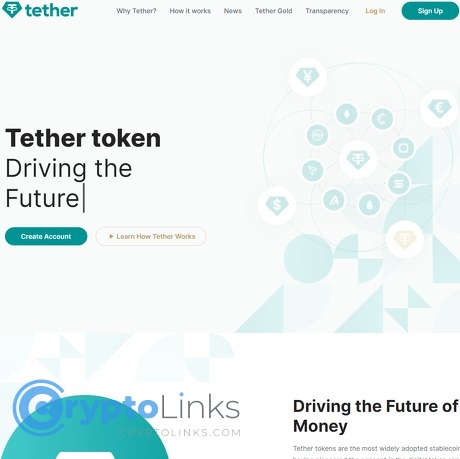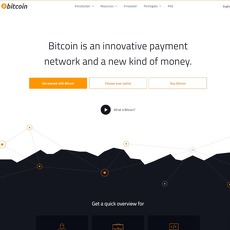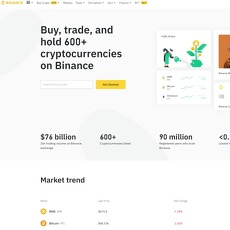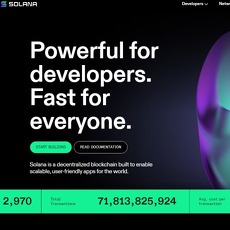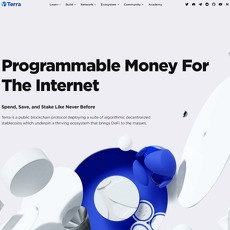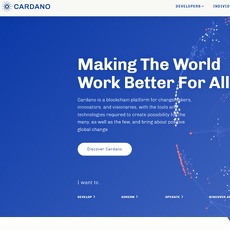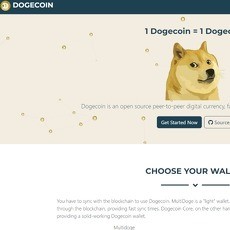tether (USDT) Review
tether (USDT)
tether.to
Tether Review 2022: What Is Tether And How Does It Work?
What is Tether?
Tether, also called by its symbol- USDT, is a digital cryptocurrency backed by an amount equal to US dollars. It is categorized as a stablecoin with its price pegged to $1.00.
Generally, the prices of stablecoins are expected to be stable, and they are used to track fiat currencies like the dollar and Japanese yen held in traditional bank accounts.
What is a Stablecoin?
A stablecoin is a blockchain-based cryptocurrency whose tokens in circulation attempt to reduce price volatility, offer stability to asset price, and are backed by a reserve asset.
Cryptocurrencies and altcoins suffer fluctuations in prices from time to time, for example, Bitcoin. In March 2020, Bitcoin rose from around $5,000 to approximately $65,000 in April 2021 and plunged by over 50% in June 2021. This fluctuation in price makes Bitcoin and altcoins less suitable for use by the general public.
History of Tether
Tether is a cryptocurrency and was initially issued on the Bitcoin blockchain through the Omni Layer protocol. Tether claims that each unit of its Tether token (or USDT) in the circulation is backed 100% by one US dollar (a 1-to-1 ratio) by the underlying fiat currency unit reserved by Hong Kong-based Tether Limited.
Tether began as a Realcoin project in 2014, and in 2015, the first Tether tokens were distributed and enabled on one of the biggest Bitcoin exchanges—Bitfinex. As one of the earliest stablecoins, Tether was successful, revolutionary, and had reputable founders. They included the Bitcoin Foundation director Brock Pierce, Reeve Collins, and Craig Sellars, as listed in its whitepaper.
Brock Pierce is known for his active involvement in business and has co-founded several high-profile crypto projects. He co-founded Blockchain Capital in 2013, a venture capital firm that raised over $80 million in funding in 2017. He became the director of the nonprofit Bitcoin Foundation, developed to promote Bitcoin. To further add to his portfolio, Brock Pierce co-founded Block.one, the company behind EOS. EOS is a custom token creation and decentralized platform in the blockchain ecosystem used to create dapps.
Reeve Collins acted as the presiding Chief Executive Officer (CEO) in the first two years of Tether's existence. Before his position at Tether, he co-founded an online ad network Traffic Marketplace and other successful companies in the entertainment industry like the entertainment studio RedLever and gambling website Pala Interactive. And in 2020, Collins joined the marketing and advertising tech company—SmarMedia Technologies.
Before the Tether project, for at least six years, Craig Sellars has been part of the Omni Foundation. MaidSafe Foundation, Bitfinex, Synereo, and Factom are some of the several companies Craig Sellars has worked with.
Understanding Tether
Tether is listed as one of the stablecoins, which tends to be stable in valuation, unlike other cryptocurrencies and altcoins. The token is built on the Algorand, Ethereum, EOS, Tron, Solana, Omni & Liquid Network, and Bitcoin Cash's Standard Ledger Protocol blockchain. Hence, issuing Tether tokens on several blockchain networks is possible depending on the protocol used.
Stablecoins are popularly subdivided into three categories—fiat-collateralized stablecoins, non-collateralized (algorithmic) stablecoins, crypto-collateralized stablecoins—with Tether belonging to the fiat-collateralized stablecoins family. That means a unit of Tether is equivalent to and backed by a single US dollar.
Tether was created to offer users transparency, stability, and minimal transaction charges. New Tether tokens are provided in circulation when there is a demand from customers who have completed and strictly followed the KYC procedure outlined by the platform.
Controversy
Following the release of Tether as a Real coin in 2014 and its distribution in 2015 on the Bitcoin blockchain, it became successful quickly and gradually accepted by users. One of the reasons was that it was one of the earliest stablecoins in the market.
As it quickly gained its ground in the crypto community, it underwent some scrutiny, and much skepticism and controversy followed. Some digging and research uncovered that the exchange—Bitfinex exchange—where it was first listed had a similar executive structure and management.
Furthermore, skeptics believe that Tether was artificially introduced into the cryptocurrency market to provide liquidity and was involved in Bitcoin's bull run. In 2017, as a result of the supposed $31 million of Tether that was stolen due to a cyber-attack, it created a temporary hard fork to prevent the spending of the stolen funds.
Although Tether claims it is pegged to the US dollar and conducts audits for transparency, it parted ways with the auditors that should have carried out the audit to ensure its reserve was maintained. Still, an audit was never conducted in 2017.
In 2021, Bloomberg reported that an ex-banker with the Tether project alleged that executives had invested reserve funds. A further investigation exposed that Tether had made billions of dollars on short-term loans to large companies in the crypto space that it had secured with Bitcoin. According to Cointelegraph, Tether called the report "a tired attempt" to sabotage the company. A spokesperson from Tether informed Bloomberg that Tether has enough cash to substitute for a day payout, no matter how large. Still, there was no confirmation that it held about $69 billion it would need to back the coins in circulation at the time.
Nonetheless, the controversies didn't stop new Tether tokens from being minted as their demands continued to increase. As of April 10, the market cap of USDT is $82,577,023,004 billion, up from $24.295 billion on January 17, 2021.
Why Is Tether Important?
Tether is a popular cryptocurrency in the crypto market. It offers investors less volatility options and more flexibility as it serves as an alternative to dollar replacement on many dominant cryptocurrency exchanges. Tether adoption continues to increase for these reasons:
Exit strategy
Volatility is a dominant concern amongst investors in the crypto sector. Investors are left with limited options to consider when a bear begins to take over the market. Converting cryptocurrency to fiat currency requires the most fee possible and can be time-consuming. Also, they can likely remain in the bear market, ride it out and take losses. With Tether, there is an extra option to convert to USDT and bypass the market volatility and transaction fees.
Reduce friction
As an asset in the blockchain network converting Bitcoin to Tether has less friction.
Remittance
Tether can be sent anywhere globally like other cryptocurrencies.
Accounting
Since the invention and use of Bitcoin, there have been challenges surrounding using it as payment in terms of accounting. Tether provides accountability in payment and eliminates the concern businesses have to deal with when paying for goods and services using crypto.
Transit Cryptocurrency
Tether makes the transfer of fiat into digital currency swift and frictionless. Tether is a smart way to convert crypto into a fiat currency which is a better alternative for people in locations where converting digital currency is a difficult task.
How Does Tether Work?
Pegging a digital currency to real-world assets can be a complex process. The task of pegging a unit of Tether to the US dollar, a one-to-one ratio, is claimed to be accomplished by the Hong-Kong-based Tether Limited that for every Tether issued, the firm keeps an equivalent amount of dollars in reserve.
This claim faced scrutiny, and the company changed the backing of Tether to include loans to companies it had secured with Bitcoin. Nevertheless, it remains the top stablecoin in the world.
Tether is integrated with the Omni blockchain protocol, which makes it unique. Omni is a versatile, decentralized, open-source digital asset platform built on the Bitcoin blockchain.
When it started, transactions used a double recording strategy that allows the entry on both the Omni system and Bitcoin to share the same transaction hash. Today, Omni assets are pegged on the various blockchain networks. With the most recent addition of the ERC-20, all of these variations help improve the security of Tether and make it more adaptable in the market.
Tether tokens can be traded on popular exchanges, including CoinSpot, Binance, BitFinex, BitPanda, and Kraken. These are just a few cryptocurrency exchanges where Tether tokens can be traded.
How Does Tether Stay On $1.00?
For every unit of Tether in the circulation, there is a reserve of one US dollar to back it up because Tether was developed to be pegged to the real-world fiat currency—the US dollar. The US dollar is held in Tether's bank account, and the total amount held must be equivalent to what they issue to prevent price fluctuations.
Is Tether A Stablecoin?
Yes, Tether is one of the most well-known stablecoins in the cryptocurrency ecosystem. In fact, it is the first revolutionary digital currency pegged to a real-world asset. Other stablecoins include Dai (DAI), Binance USD (BUSD), TrueUSD (TUSD), USD Coin (USDC), TerraUSD (UST), and Digix Gold Token (DGX).
How Do I Buy Tethers(USDT)?
USDT can be purchased on most of the major cryptocurrency exchange and lending platforms. Tether is unique and works on multiple blockchain networks that include Bitcoin, Tron, Ethereum, Solana, EOS, SLP, Algorand, and Liquid.
Wallet
The ability to perform with multiple blockchain networks and its versatile usage give it a wide range of storage options. You can store your asset in either software, hardware, or paper wallet.
Transaction Fees
Tether trading fee depends on the blockchain network you use. Ethereum blockchain (ERC-20), for example, will require Ethereum gas fees to be paid. Hence, the price varies with platforms.
Transaction Time
According to Kraken, the transfer of Tether takes as much as forty minutes on the Bitcoin blockchain (via Omni), compared to the TRC-2 blockchain and ERC-20, which take about two minutes and twenty minutes respectively.
What is Tether Used For?
Tether (USDT) is one of the best options for investors looking to avoid high volatility in the crypto market. Investors and traders can reduce their risk when there is a sudden price drop in the market by moving their cryptocurrency to USDT, a more stablecoin. Also, moving to USDT is cheaper compared to the US dollar.
Is Tether Built on Ethereum?
Yes, Tether is built on Ethereum. Initially, it was built on the Bitcoin blockchain via Omni protocol. Today it works on multiple blockchain networks that are not necessarily Bitcoin. These multiple platforms include Solana, EOS, SLP, Algorand, and Liquid.
Pros and Cons of USDT
Pros of USDT:
- USDT transactions take place within minutes
- Value stability
- Low fees
Cons of USDT:
- No mining
- Centralization
Frequently Asked Questions(FAQs) on Tether
What is Tether?
Tether is a token enabled on blockchain technology to promote the use of fiat currencies in a digital form. Tether's approach is a modern approach to finance.
Today, users can trade with traditional currencies without the usual volatility and complexity associated with a digital currency like Bitcoin.
What Are Tether Tokens?
Tether tokens (or USDT) move across blockchain networks as easily as other digital currencies, but they are pegged to real-world assets on a 1-to-1 basis.
Tether tokens are categorized as stablecoins because they offer stability in price as they are pegged to a fiat currency. Hence, low volatility is experienced, which is beneficial to traders and merchants when trading.
How Are Tether Tokens Created?
Tether tokens are not mined like Bitcoin. Tether Limited creates new tokens and lists them on crypto exchanges like Bitfinex.
According to Tether, the creation of Tether comes from owning multiple Tether private authorization keys sign and broadcast creation transactions on the specific blockchain. These new tokens are "authorized but not issued," which implies that these USDT are stored in Tether's treasury and not in circulation until issued in response to market demand.
How Do I Know that My Tether Tokens Are Secure?
All Tether tokens enjoy 100% backing by its reserve and are built on open-source blockchain technologies, secured with cryptographic functions, bounded by global government regulations, and cryptographically secure.
Tether claims to be fully transparent and proves this claim by publishing daily records of the balance held in the bank and the value of its reserves.

